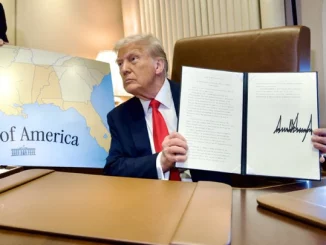
| Published April 24, 2025
President Donald Trump has signed a series of executive orders aimed at overhauling the U.S. education system, focusing on eliminating diversity, equity, and inclusion (DEI) initiatives, restructuring accreditation processes, and enhancing transparency regarding foreign financial contributions to universities.
Key Provisions of the Executive Orders:
-
Elimination of DEI Programs:
-
The orders mandate the cessation of DEI programs in K-12 schools and higher education institutions.
-
Institutions are required to certify that they do not operate any DEI programs that violate applicable anti-discrimination laws.
-
-
Restructuring Accreditation Processes:
-
The executive orders direct the Department of Education to overhaul the college accreditation system, focusing on student outcomes and merit-based evaluations.
-
This includes challenging existing accreditation bodies and encouraging the establishment of new ones that align with these objectives.
-
-
Enhanced Transparency on Foreign Financial Contributions:
-
The orders enforce stricter disclosure requirements for universities receiving foreign financial support, particularly from nations like China.
-
Institutions must provide detailed reports on foreign donations and financial ties.
-
-
Promotion of Artificial Intelligence (AI) Education:
-
A federal task force is established to integrate AI education into K-12 curricula.
-
The initiative aims to prepare students for future workforce demands in the rapidly evolving tech industry.
-
-
Support for Historically Black Colleges and Universities (HBCUs):
-
The orders include measures to bolster HBCUs, such as increased funding and the creation of a presidential advisory board.
-
The administration emphasizes the importance of these institutions in providing quality education to African American students.
-
SOURCES: BREITBART – Trump to Sign Orders to Block DEI-Based School Discipline
WFIN – Trump signs education-focused executive orders on AI, school discipline, accreditation, foreign gifts and more
BALLER ALERT – Trump Signs Executive Order to Reinforce Discipline in U.S. Schools
THE WASHINGTON TIMES – Trump signs executive order targeting education accrediting system




